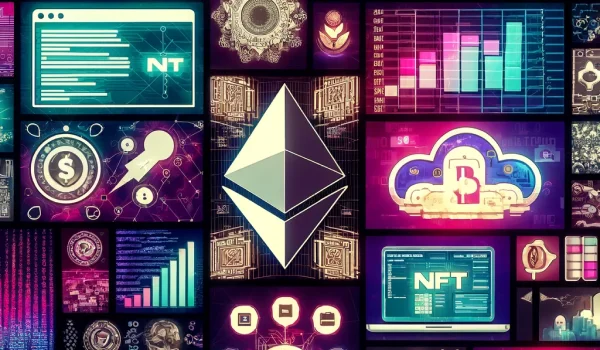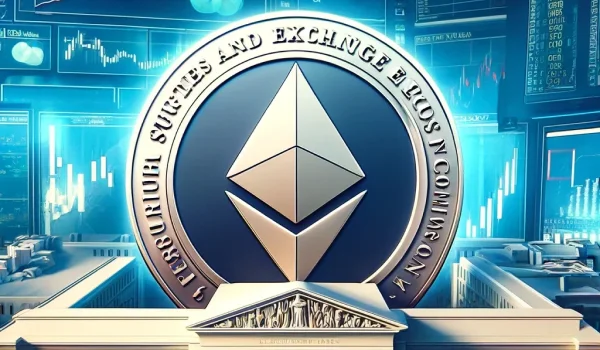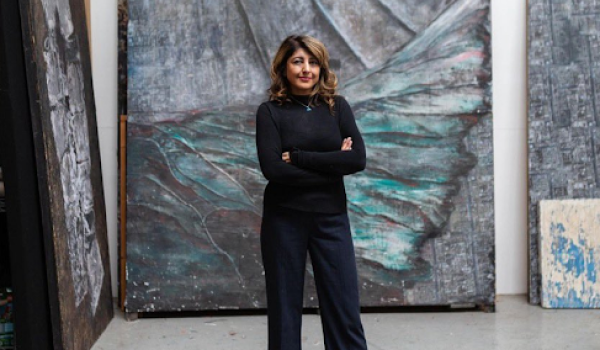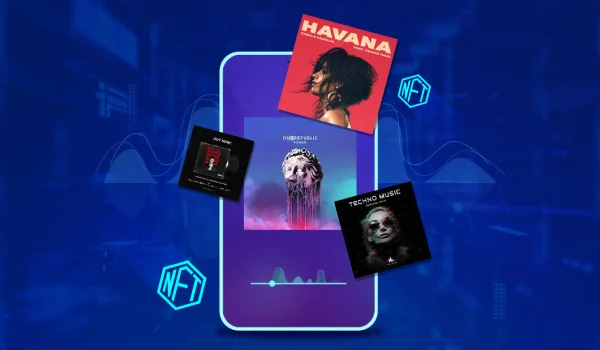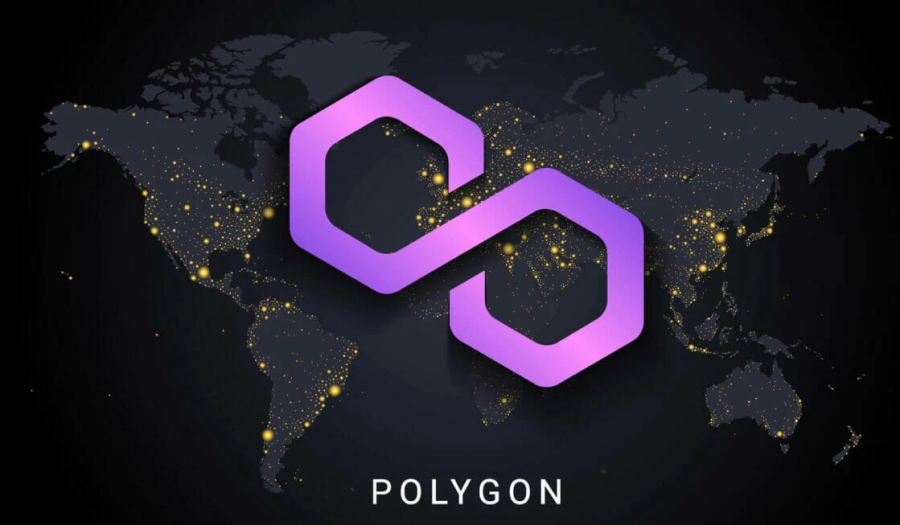Picture a world where technology rules. We've come a long way from bulky computers to sleek smartphones. And that's not all! With blockchain technology, we've made even greater leaps. We've seen its power transform industries, from banks to creative spaces. It's a digital revolution!
Now, you're probably wondering, "What's next?" Well, it's DeFi, GameFi, and NFTs! But there's more. Everyone's talking about these entities called Decentralized Autonomous Organizations, also known as DAOs. But, what exactly are these DAOs? And how do they relate to NFTs?
Hold tight! You're about to discover all you need to know about DAOs and how they boost NFTs.
What is a DAO and How Does It Work?
Imagine a group of people from across the globe working together, guided by shared goals and bound by blockchain rules, without any boss or middleman. That's a Decentralized Autonomous Organization (DAO) in a nutshell. It's a democratic entity steered by the votes of its community members. Let's now uncover how it operates.
So, how do DAOs work? They use smart contracts. Consider these as the 'game rules.' They come into play when specific situations arise. Hence, the name - Decentralized Autonomous Organizations.

Traditional Top-Down Organization VS Decentralized Autonomous Organization
Unlike usual organizations, DAOs have no bosses. Their rules are open to all and are stored on a blockchain. This means anyone can check them out. Members of the community propose decisions, and then everyone votes. Neat, huh?
DAOs, in a way, are like companies. But they work without the boss-employee setup. They try to create a fair, democratic system. Members of a DAO are not tied by formal contracts. Instead, they're united by shared goals or incentives.
| Traditional Organization | Decentralized Autonomous Organization | |
| Decision-making | Centralized often limited to a small group of people | Decentralized, involves all members, uses a voting system |
| Ownership | Owned by a small group of shareholders | Decentralized ownership by all members |
| Transparency | Decisions are generally kept confidential | All decisions are published on a public view - blockchain ledger |
| Type of governance | Hierarchical, with clear lines of responsibility | Flat, with no hierarchy |
| Speed of making decisions | Slow, often because of the need for approval from multiple levels of authority | Often faster due to the ability for all members to vote on proposals collectively |
Traditional Organizations vs DAOs
DAOs exist in a wide range of forms and dimensions. The best part? You can even start your own!
The Relationship between DAOs and NFTs
Investing in popular NFT projects can be quite expensive. So, collector DAOs allow multiple people to own a part of an NFT. Cool, right?
Take APE DAO, for example. It breaks down Bored Ape Yacht Club NFTs into smaller pieces. This lets multiple users own a piece of the same asset.
But the DAO-NFT connection isn't just about collector DAOs. DAOs can also help launch NFT projects. Community members and creators can work together, decide, and bring fresh ideas for the NFT project's future.
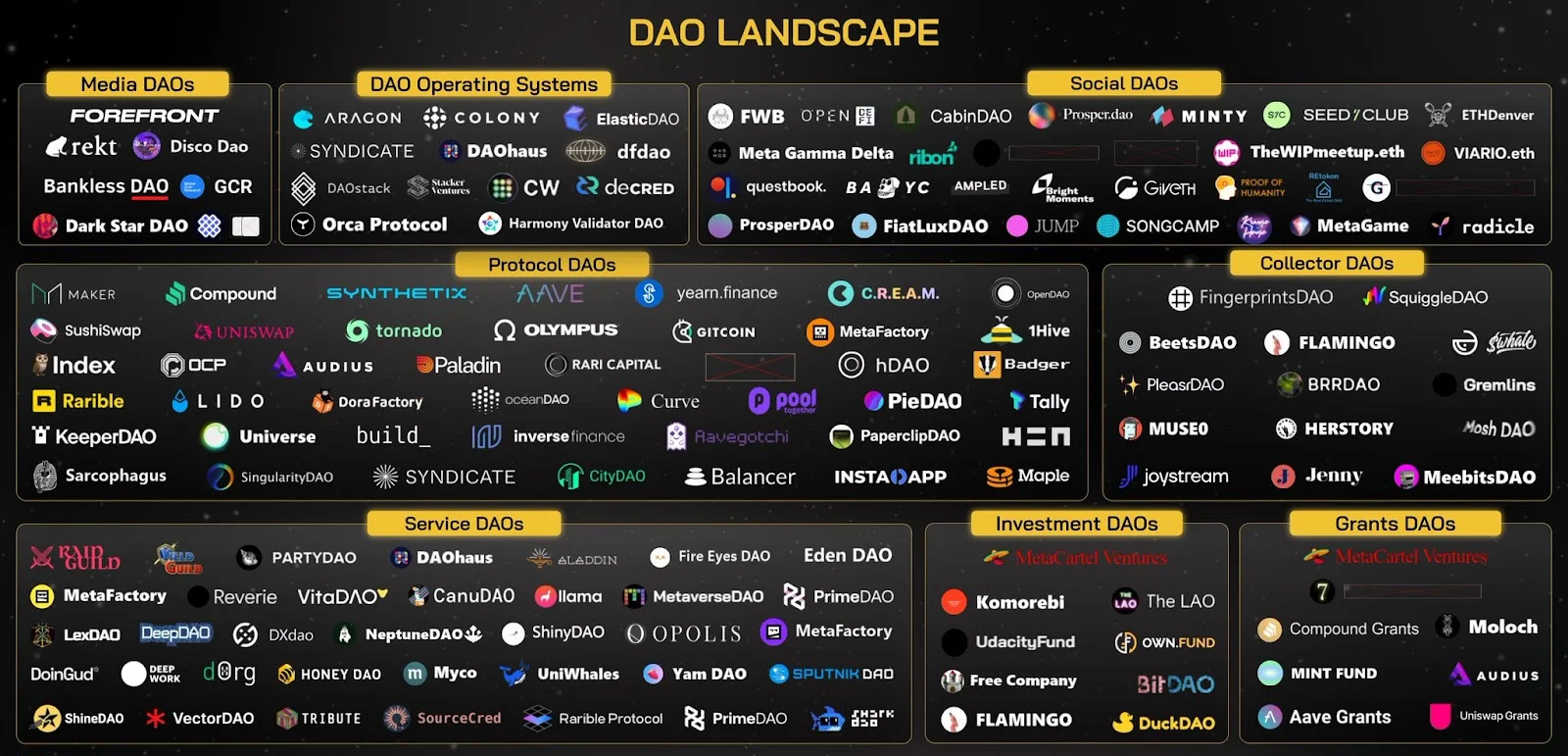
DAO Landscape, curated by Coin 98 Analytics
Furthermore, DAOs can be a lifeline for smaller projects or emerging creators striving to build their community. Not everyone has the luxury of a pre-existing fanbase. This is where DAOs can mimic crowdfunding platforms, helping to gather funds and create engaged communities around NFT projects. The community members have the power to vote for the initiatives they are most eager to support and see flourish.
Wrapping Up
While DAOs may not be as well-known as NFTs or DeFi, they've been around for some time, and their potential use cases are genuinely intriguing. They offer a fresh way of organizing, creating, and funding projects in the NFT space. As the NFT universe continues to expand and mature, we can expect DAOs to become more embedded in the fabric of this space. By empowering communities and fostering creativity, DAOs have the potential to unlock new horizons for the world of NFTs.


 4 mins read
4 mins read